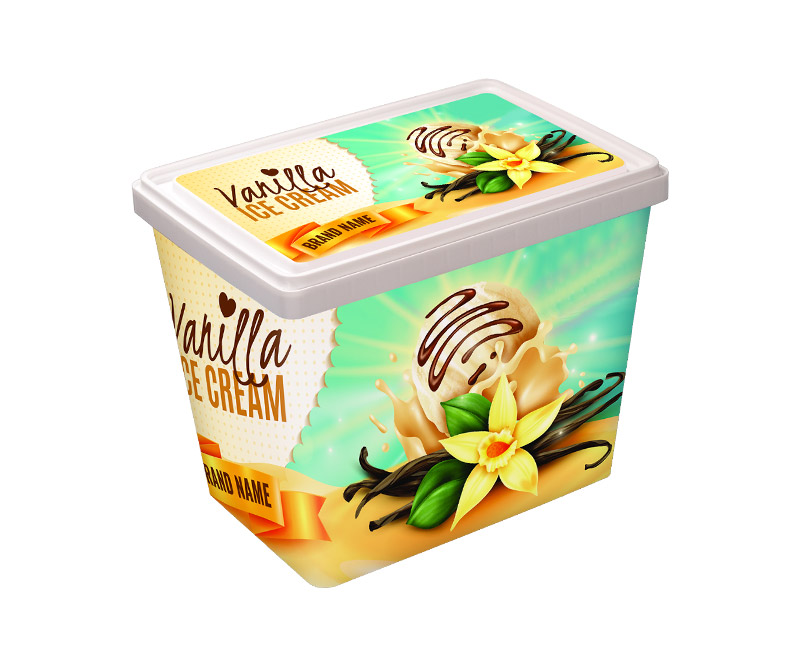Do ice cream containers keep ice cream cold for longer periods?
Ice cream containers are specifically designed to help keep ice cream cold for longer periods, ensuring that it remains frozen and maintains its texture and flavor. While the primary purpose of these containers is to store and transport ice cream, their construction and materials play a crucial role in preserving the product's temperature. Let's explore how ice cream containers achieve this and the factors that contribute to their effectiveness in keeping ice cream cold:
Insulation: Ice cream containers are typically made from materials that provide insulation to help maintain cold temperatures. Common materials include plastic, cardboard, and insulated foam. These materials help to create a barrier between the ice cream and external temperatures, reducing heat transfer and slowing down the melting process.
Thermal Properties: The thermal properties of the materials used in ice cream containers contribute to their ability to keep ice cream cold. For example, insulated foam containers have excellent thermal insulation properties, which help to trap cold air inside the container and prevent heat from entering.
Tight Sealing: Proper sealing is essential for maintaining the cold temperature inside the ice cream container. Many ice cream containers come with tight-fitting lids or seals to prevent air from entering or escaping. This helps to preserve the cold temperature of the ice cream and prevent it from melting prematurely.

Size and Shape: The size and shape of custom ice cream containers can also influence their ability to keep ice cream cold. Smaller containers with less empty space have less room for warm air to circulate, helping to maintain colder temperatures. Additionally, containers with thicker walls or multiple layers of insulation offer better thermal protection.
Transportation Considerations: Ice cream containers are often designed with transportation in mind, incorporating features such as handles or reinforced edges for easy handling and stacking during transport. Proper packaging and handling during transportation help to minimize temperature fluctuations and ensure that the ice cream remains cold throughout the journey.
Recommended article:What is metalized paper?
5 Must-Have Features in an Ice Cream Container
Why Choose Custom Printed Ice Cream Containers?
What Is Waterproof Self-Adhesive PP?
Tin Box Packaging: What Is It and Why Will It Benefit Your Brand?
How Personalized Event Stickers Enhance Your Celebration
Industrial Labels vs. Transportation Stickers: Which Is Better?
Environmental Conditions: Environmental factors such as ambient temperature and humidity can affect the ability of ice cream containers to keep ice cream cold. In hot and humid climates, for example, ice cream containers may need to provide more insulation and tighter sealing to prevent melting.
Use of Ice Packs: In some cases, ice cream containers may be used in conjunction with ice packs or dry ice to further extend the cold storage time. Placing ice packs around or inside the container helps to lower the temperature and maintain the cold chain during storage and transportation.
Consumer Practices: Proper handling and storage practices by consumers also play a role in keeping ice cream cold. For example, storing ice cream containers in the freezer immediately after purchase and minimizing the time spent outside the freezer during serving can help to preserve the cold temperature of the ice cream.
In conclusion, ice cream IML containers are designed to keep ice cream cold for longer periods by providing insulation, thermal protection, tight sealing, and other features that help maintain cold temperatures. Factors such as the materials used, container size and shape, transportation considerations, environmental conditions, use of ice packs, and consumer practices all contribute to the effectiveness of ice cream containers in preserving the cold chain and ensuring the quality of the ice cream.
How to Choose the Best Cultural Art Stickers?
Are Creative Stickers Safe for Kids' Use and Playtime?
What Are the Benefits of Personalized Sticker Printing?
Sustainable Jewelry Packaging: Key Considerations for Buyers
Understanding Personalized Cultural Labels for Export Markets
Understanding Consumer Product Labels: What Buyers Need to Know
Children's Hardcover Book Printing: 5 Things to Consider



